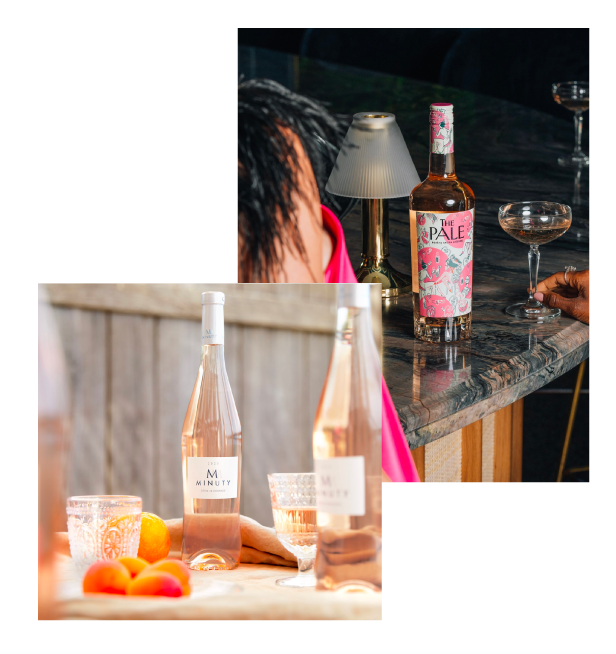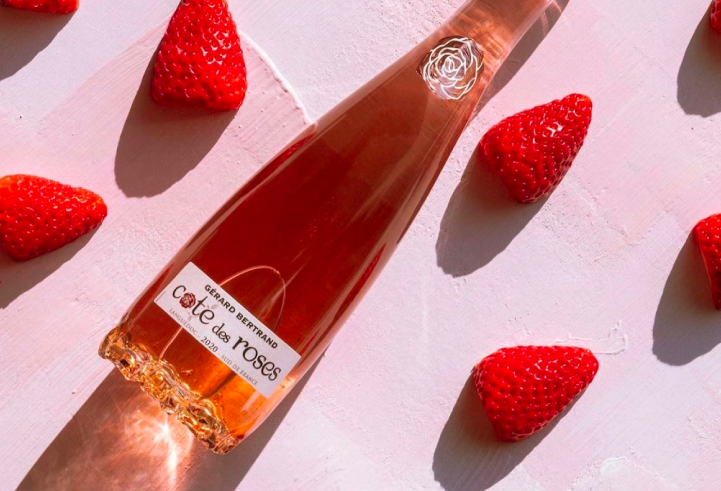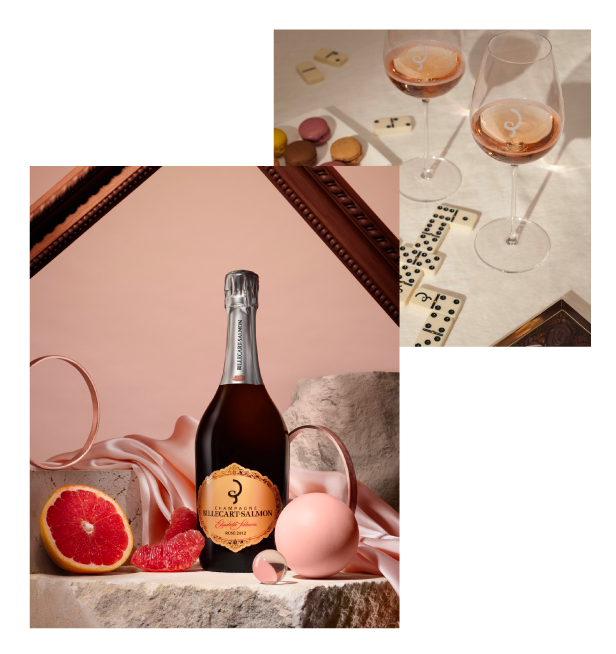
Introduction
French Rosé
French Rosé has absolutely surged in popularity, becoming a fan favourite for wine enthusiast. The refreshing nature and versatility make it a wine that suits many occasions.
But what exactly makes French Rosé so unique compared to other Rosé'? It is considered to be much more superior due t o the meticulous winemaking traditions within France, with a more refined flavour profile that people fall in love with.
The ancient origins of French Rosé takes us back to the Greeks and Romans, however it was in Provence where Rosé truly blossomed and talk the market by storm being a summer staple varietal.
This quintessential summer wine has captured the hearts globally and for good reason. French Rosé, with its captivating hues ranging from very light pale pink to a vibrant salmon colour offers a spectrum of flavours. Perfect for a picnic, beach day or a cute garden party, Rosé is your perfect companion.
French Regions
France is home to several prestigious wine varietals but today we're here to talk about Rosé! Several French regions producing Rosé each offering very unique characteristics that contribute to the diversity of French Rosés. Provence, Loire Valley, Champagne, Rhone Valley are all very popular regions in the wine world and many know just how good the production over there is, lets focus on a few selected regions that scream good Rosé.
Provence
Provence is highly regarded and well known as the Rosé capital of the world. This is located in the Southeastern region of France that is set beside beautiful landscapes and within the Mediterranean climate. The iconic spot is a vast area stretching from the Rhone right through to the Italian border. Your Provencal Rosés are typically more light, dry and crisp. You'll find the palate is filled with delicate notes of citrus, melon and red berries. One of our very favourite wines from this location is the Whispering Angel, a must try in our books!
Loire Valley
Another popular Rosé producing region, known for more diverse styles of Rosé with its more diverse terroir, gives us beautiful Rosés that differ from dry to sweet.
You will also commonly notice they tend to use grapes made from Cabernet Franc and Pinot Noir. You'll more commonly find that a Loire Valley Rosé is much dryer than the other regions. You'll enjoy the fresh acidity and vibrant flavours of red fruits and flowers that Loire Valley Rosés typically show.
Tavel
This region is located in the Rhone Valley and is a hot topic when it comes to full-bodied and robust Rosés that are enjoyed with much heartier meals. Much deeper in colour, with commonly a higher alcohol content. It's said that the very first French Rosé was actually produced in Tavel! The terroir is known for its fruity to spicy and acidic rosés making them very unique and interesting.
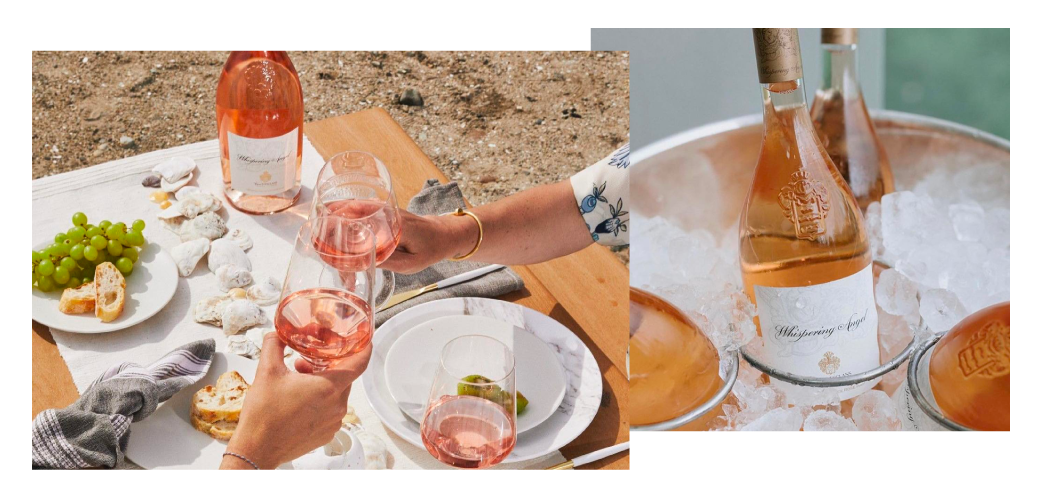
What's the key differences between New Zealand & French Rosé?
New Zealand has a great following when it comes to their wines and the Rosé varietal is right up there. Both countries offering extremely great wines but what are those key differences between the two countries? Lets find out!
New Zealand has a cooler climate and in particular, regions of Marlborough and Central Otago produce Rosés that are much more vibrant and fruit-forward. The maritime climate influence and varies terroirs of NZ add complexity and freshness to their wines.
France, particularly Provence and Tavel, has a lovely Mediterranean climate that gives their wines a crisp style with delicate flavors. Unique soil compositions and microclimates in France also play a crucial role in defining character of the wine.
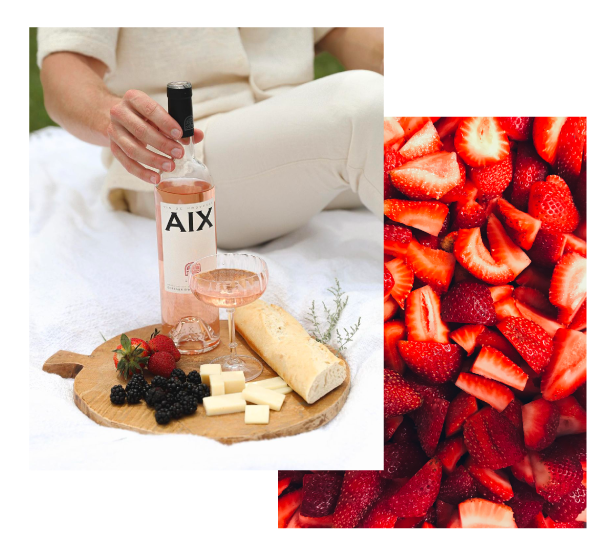
Wine Style
French Rosé is a type of wine that incorporates some of the colour from grape skins but not enough to qualifies a red wine. A delicate balance gives Rosé its characteristic pink hue, the grape skins are removed early during fermentation which results in a lighter and crisper wine.
The Aroma:
Colour wise you will notice it ranges from very pale pink to vibrant salmon. Your typical aromas are strawberry, raspberry and floral hints.
The Palate:
The palate is usually filled with a fresh acidity, red fruit flavours with a crisp finish.
Food Matching:
There are a great variety of dishes that match well with French Rosé. A few to name:
Light appetizers: tapas, olives, platters
Seafood dishes: grilled fish, salmon and sushi
Salads: fresh greens with a vinaigrette dressing
Barbeque: Grilled chicken, pork and vegetables.
Top Picks
What is the best French Rosé?
It's hard to narrow down the very best French Rosé in the market but when it comes to Rosé our team are experts. Here are 5 of our very top picks of French Rosé that we can represent as our favourite and best French Rosé drops.
Produced in the Cotes De Provence, you'll enjoy a Dry and fruity styled drop with raspberry, redcurrant and peach coming through on the palate.
Hints of floral and light red berries will sweep you off your feet. If you enjoy a dry Rosé this is a charming choice that boasts fruity freshness.
A true delight, this Rosé has all the notes of a premium drop with those warm summer berry flavours of strawberry, watermelon and floral.
Light-bodied yet full of flavour, this is a very delicate styled Rosé that is mixed with the traditional varietals of Grenache, Syrah and Cabernet Sauvignon.
With a very affordable price point, this drop is more on the soft and creamy style of Rosé with a bone dry finish. We call it magic in a bottle!
